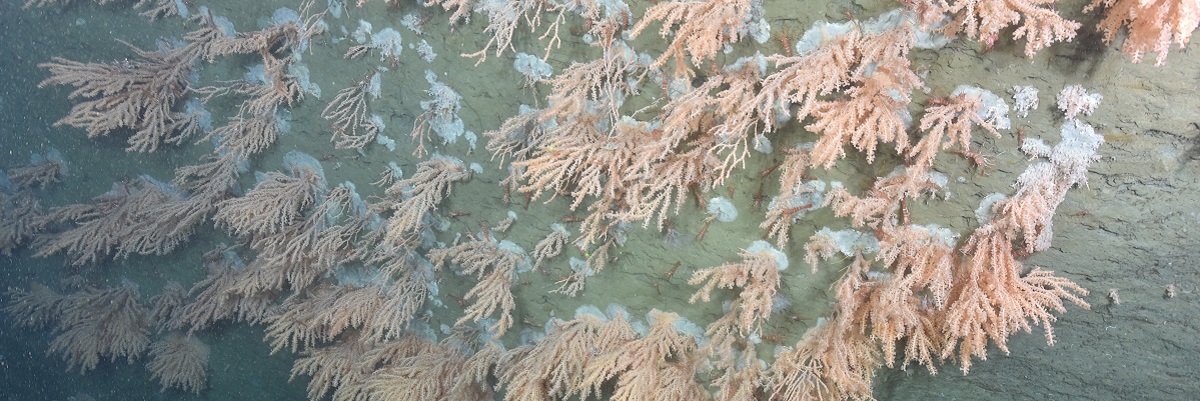Deep-Sea Coral Research in Submarine Canyons
ROPOS collected data on the distribution, abundance and diversity of deep-sea corals for future MPAs
From 14-27 June 2019, the CSSF team joined chief scientists Drs. Martha Nizinski (NOAA) and Anna Metaxas (Dalhousie University) in support of their deep-sea coral research in submarine canyons off the Northeast Coast of the U.S. and Canada and in the Northern Gulf of Maine. The research team focused on filling data gaps in the distribution, abundance, and diversity of deep-sea corals to inform resource managers and aid in determining MPA boundaries and coral-closure areas on both sides of the border.
Collection of imagery and physical samples was a high priority. Samples of corals and other invertebrates were collected for taxonomic, biodiversity, aging, reproduction, and genetic studies of deep-sea corals and other invertebrates; sediments and water samples collected in and around deep-sea coral habitats were collected for biology (macro-, meio- micro-fauna), chemistry (e.g., nutrient cycling) and microbiology.
In addition to biological and sediment sampling, the ROV captured 96 hours of video transects and hundreds of digital still images. Additionally, a 4K internally recording camera, owned by Fisheries and Oceans Canada (DFO), was integrated with ROPOS specifically for this mission resulting in hundreds of additional high-resolution images.
After sub-sampling of collections, ROPOS collected 487 samples in total for analysis in at least seven different laboratories.
By the Numbers
ROPOS performance during the expedition
112
Hours Submerged
Over 12 operational days, ROPOS completed 11 dives, totaling almost 112 hours submerged.
29
Water Samples
Collected at depth using 4 X 5L Niskin bottles mounted at the front of the ROV
69
Sediment Push Cores
Push cores are manually collected using the manipulators and then secured in holsters on swing arms attached to the sides of the ROV.
80
Coral Samples
In addition to corals, 43 invertebrates and 2 rock samples were collected using scoops and nets held by the manipulators, or vacuumed up using the onboard suction sampler.

